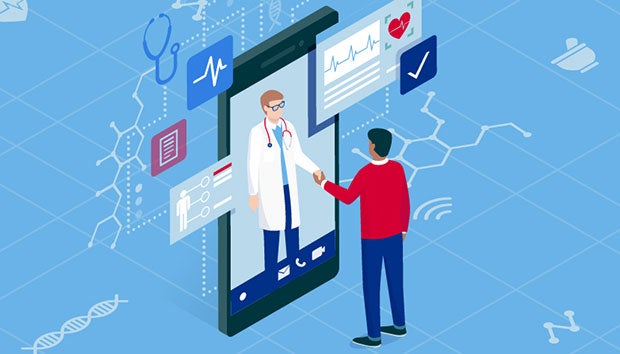

Improving Patient Engagement through Mobile Health

Providing a great experience for consumers who use mobile devices to access their medical data through online portals is more than just a convenience issue. A recently published study shows it can lead patients to be in more regular contact with primary care providers and less likely to be hospitalized.
The research, based on Kaiser Permanente data on diabetes patients from 2006 to 2007 and those with multiple chronic conditions, also found that those who had connected to health resources via smartphones, tablets or computers had improved outcomes.
Offering consumers secure messaging with their providers, the ability to make appointments and see their lab results on mobile devices can lead to greater levels of engagement. Delivering patient education and medication refill services after office hours through connected devices also add value to the patient experience.
Yet, despite the inherent advantages these tools can offer, the typical user experience today often may be less than desirable. A recent mHealth Intelligence report explores this issue.
For starters, the web-based version of a portal is typically designed with a larger landscape and smaller click targets. A portal accessed from a smaller device like a mobile phone needs to adapt to a simpler, cleaner layout with larger touch targets for tapping, Craig Cooper, product manager with AdvancedMD, an electronic health record software vendor, told mHealth Intelligence.
Other Common Portal Design Flaws That Can Impede mHealth Use
Cooper cites other design flaws common to patient portals accessed by mobile devices, including:
- Lack of space between clickable areas: This can cause items and links to be too close together and hard to access, particularly for those with large fingers.
- Failing to provide contrast between colors and text: This can make content hard to view on a mobile device.
- Offering a scaled-down version of the web portal for mobile devices: While this may seem practical from a designer’s standpoint, it may frustrate consumers who are accustomed to the web portal experience.
- Failing to account for mobile adaptation: This causes the user to have to zoom in and out while scrolling through the portal on a mobile device.
Design issues aside, providers need to emphasize the value of engaging through the web portal. As a May data brief from the Office of the National Coordinator for Health Information Technology illustrates, nearly half of all patients aren’t accessing their health records online. The report notes that 51% of patients were offered online access to their medical records — unchanged from 2017 to 2018. Among those who have access to their health records online, 58% viewed their data at least once in 2018 — up from 53% in 2017.

The good news: The ONC brief shows that individuals with chronic health conditions were more likely to be offered access and view their online medical records than those without chronic illnesses.
The most common reasons patients cited for not using online records included preferring to speak directly with a health care provider, thereby not having a need to use their online health records. Interestingly, far fewer patients expressed concern about privacy or security of online records in the 2018 survey (14% vs. 25% in 2017).
What’s troubling about the numbers cited in the ONC report is that nearly two-thirds of patients don’t perceive a need to be in regular contact with their PCPs. A well-designed user experience for mobile-device users could assist patients in becoming more engaged in their health and care, benefiting both consumers and providers.



